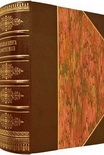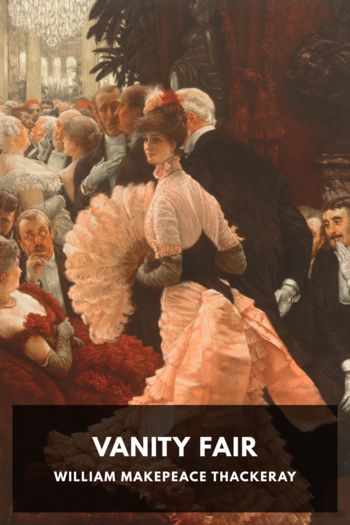Just Jackie Edward Klein (top 10 novels of all time .TXT) 📖

- Author: Edward Klein
Book online «Just Jackie Edward Klein (top 10 novels of all time .TXT) 📖». Author Edward Klein
As the art director of Camelot, Jackie played an important role in Bobby’s political plans. She had recently learned that, despite her efforts to stop him, Jim Bishop intended to publish a book called The Day Kennedy Was Shot. She wrote Bishop, appealing to him to abandon the project.
As you know—it was my fear as long ago as December—that all sorts of different and never ending, conflicting, and sometimes sensational things would be written about President Kennedy’s death.
So I hired William Manchester—to protect President Kennedy and the truth. He was to interrogate everyone who had any connection with those days—and if I decide the book should never be published—then Mr. Manchester will be reimbursed for his time.
Bobby objected to Jackie’s use of the words “hired” and “reimbursed,” and so she sent a second letter to Bishop.
I chose Mr. Manchester because I respect his ability and because I believe him capable of detachment and historical accuracy…. I exercise no surveillance over what he is doing, and I do not plan to. He will present his finished manuscript and it will be published with no censorship from myself or from anyone else…. I have no wish to decide who writes history.
That, of course, was untrue. Jackie had called in Manchester for the express purpose of stopping Jim Bishop. As always, she was trying to be the puppeteer who controlled the strings of history. She envisioned Manchester’s book not only as a beautiful and brave account that reflected her version of her husband’s murder, but as one that would also serve as a manifesto for Bobby’s long march to the White House.
“You must win,” Jackie told Bobby of the Senate campaign. “You will win.”
One way of assuring an impressive victory was for Jackie to campaign by his side.
“You could do it with dignity,” Bobby told her. “An appearance here, a few TV spots there.”
But Jackie, who occasionally showed up for private fund-raisers for Bobby, had other ideas.
“What if I attend some of your rallies in disguise?” she asked. “You know, wearing a wig or a turban or something? I could lend moral support.”
“That’s not exactly what I had in mind,” Bobby said. “What about the children? Can I use Caroline and John?”
“I don’t think so,” she said.
“This campaigning is a lot tougher than I expected,” Bobby said. “All that smiling …”
“You could turn on a very low-level smile,” Jackie said. “It’s the really broad smiles that wear you out. A gentle little smile would wear better.”
LESSONS IN SELF-IMPROVEMENT
A smiling Oliver Smith was waiting for Jackie when she arrived by limousine at his yellow town house on Willow Street in Brooklyn Heights. It was the dead of winter in 1965, and Jackie was wearing a tailored wool coat that looked like it came from Halston. She stepped past the ornately carved black door that Oliver Smith held open for her, and entered his house.
“Welcome to the house that Sam Goldwyn built,” Oliver Smith said, helping her off with the coat. “I bought this place with the earnings from my first Hollywood film, Band Wagon.”
Oliver Smith was a theatrical designer, and everything about him was theatrical in an understated sort of way. A tall, lanky figure with closely cropped hair, he was dressed in a custom-made double-breasted blue suit from Dun-hill. A cigarette dangled from a long, delicate hand that emerged from a cuff fastened with a small gold cuff link. He looked like a Noel Coward creation, a man who knew how to live in grand style.
He led Jackie into the living room, and began mixing martinis. He had spent the past ten years restoring the four-story, Federal-style house, and the place was a marvel of visual imagination. The high-ceilinged room featured a spectacular spiral staircase, a silver chandelier, and an ornate Chippendale mirror over a black Belgian marble fireplace. Two cats snoozed in front of a blazing, stagy fire.
Oliver Smith handed Jackie her drink, then sat down facing her. Once he had a martini in hand, he needed a cigarette, and he lit another Marlboro. When he crossed one long leg over the other, it touched the floor.
Jackie came to Oliver Smith’s house once a week to take drawing lessons. She had always possessed a talent for drawing amusing figures in the children’s-book style of Ludwig Bemelmans, the creator of the Madeline series. In fact, Jackie and Bemelmans had once corresponded about collaborating on a children’s book, possibly with Madeline visiting the White House. Bemelmans had also urged Jackie to keep a daily journal with her personal thoughts and illustrative sketches.
Bemelmans died before he and Jackie had a chance to carry out their project. After she moved to New York, she embarked on a self-improvement kick with another visual artist, Oliver Smith.
“What’s new with Truman?” Jackie asked.
“Pardon me?” Smith said. He was hard of hearing.
“ Truman,” Jackie repeated, louder.
She was referring to the writer Truman Capote, not the ex-President.
Jackie and Smith had been introduced by Truman Capote, though introductions were hardly necessary for two such well-known people. Oliver Smith was a legend in the theater. He had scored his first major success back in 1942, designing the scenery for Agnes de Mille’s Rodeo. He then went on to do the sets for On the Town, My Fair Lady, West Side Story, and The Sound of Music, as well as for a number of productions of the American Ballet Theatre, where he was now codirector.
A little over a year before, Smith had brought the American Ballet Theatre to Washington, where Jackie and the President saw the company perform in a decrepit movie theater near the White House. Jackie was dismayed by the contrast between the evening’s brilliant performance and its down-at-heels surroundings, and it got her to thinking about a center for the performing arts in Washington that would be modeled after Lincoln Center





Comments (0)